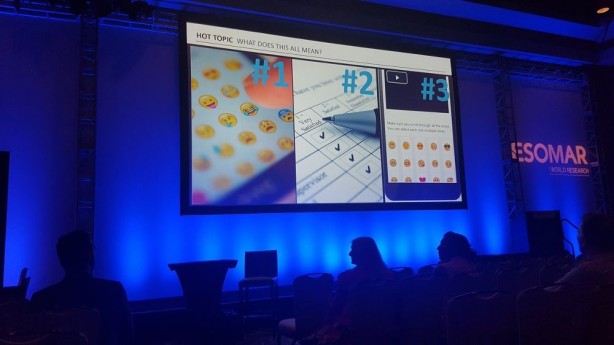
Last week, the ESOMAR UK community gathered at Lightspeed GMI’s offices in London to hear the UK research industry’s best contributions to ESOMAR conferences in the last year. After hearing ESOMAR’s response to the recent Cambridge Analytica & Facebook scandal and the work of the ESOMAR Foundation we heard the following presentations:
- Visionary Ideas and The Use of Instant Messenger, Stephanie Pineda, Kantar Millward Brown
- Fail Again, Fail Better, Pete Totman, Jigsaw Research
- Inside Out, Kristin Hickey, Kubikaloo
A truly wide range of content for the evening which highlighted some key debates in our industry:
research for good vs. research for bad
John Kearon of System1’s discussion on how research can be a tool for social good highlighted the societal benefit research can bring. As an industry we have the skills to benefit the lives of those outside of commercial brand owners. The message here is clear: let’s make research accessible for the third sector. We can better their endeavours by giving them access to their audiences.
Research’s public facing image has taken a big knock recently with the news that Facebook surveys were used to obtain personal data without permission. This should serve as a stark reminder to all involved in research and data that despite the growing need for speed and bigger data sets, we must place ethics at the heart of what we do. We are in the people business – let’s make sure we have our public’s best interests at heart.
insight innovation vs. research tradition
We are an innovation based industry and must innovate to survive. Stephanie Pineda highlighted how we can better talk to participants by using communication methods relevant to them. The use of Instant Messenger tools as a method for doing so highlighted how this approach can heighten participant engagement and help us get to a better consumer truth. This reiterates that we are in the people business – let’s speak to people in ways they’re used too.
Pete Totman agreed on the need for innovation. However, he reminded us that the shiny lights of innovation shouldn’t push us away from getting the basics right. In whatever ways we innovate in speaking to research participants, making sure of their comfort in participation is as important as showing our creative side. On the flip side, let’s only be as brave with innovations as our clients are prepared to be. Don’t be brave enough and we’ll be seen as uncreative. Be too brave and we’ll scare clients off.
research as entertainment: yes or no?
No sooner had we heard that focus groups aren’t entertainment, Kristin Hickey claimed that soon research would need to better entertain its audiences.
In the ‘yes camp’, I can see many reasons to agree with this. As we struggle for the headspace of business leaders and the attention of participants, a bettered ability to entertain can make research a more intriguing proposition. This is even more applicable if we, as Kristin recommended, better use the opinions of children in research to tap into their creative mindset.
Conversely, we must not forget that research is about content. Getting the right content in our conversations with participants and communicating the right content to clients. Could an over focus on entertainment detract from this? Possibly. The reality is, there will be instances where entertainment in research is fit-for-purpose and instances where it is not. It is up to us to decide where and when those fit-for-purpose moments are.
This article was first posted on RWConnect.
By Jack Miles, Research Director
if you would like further information, please get in touch via:




